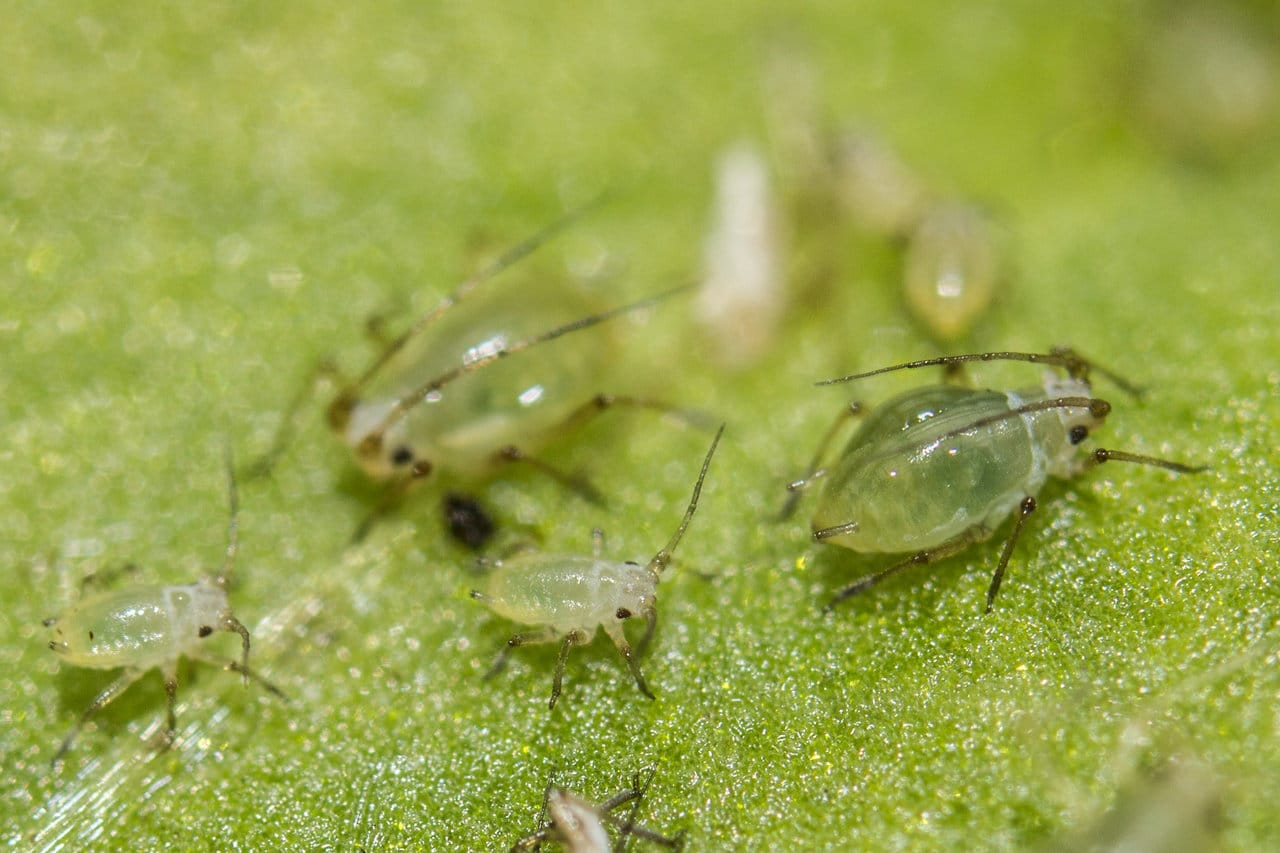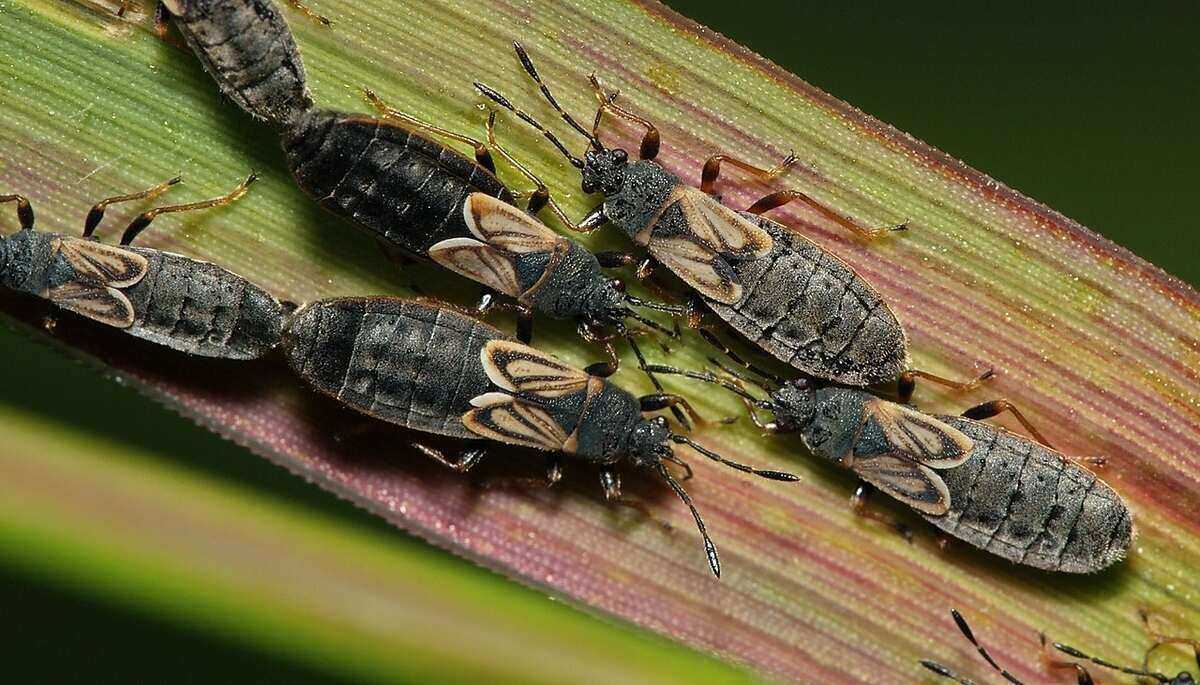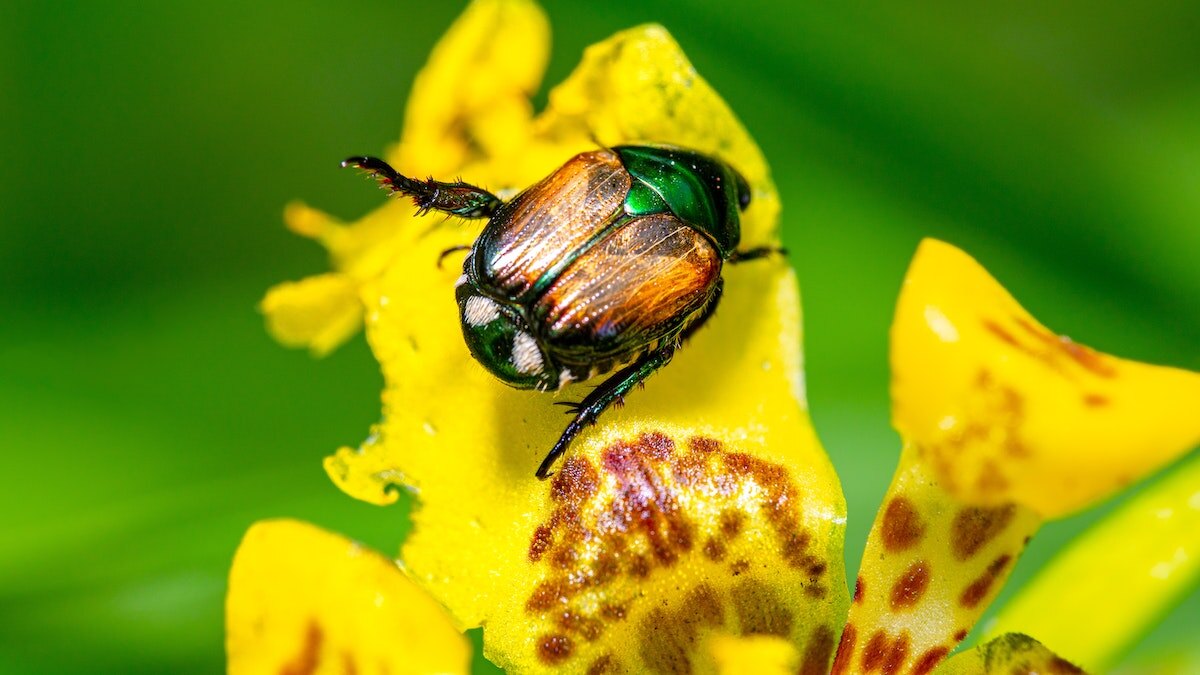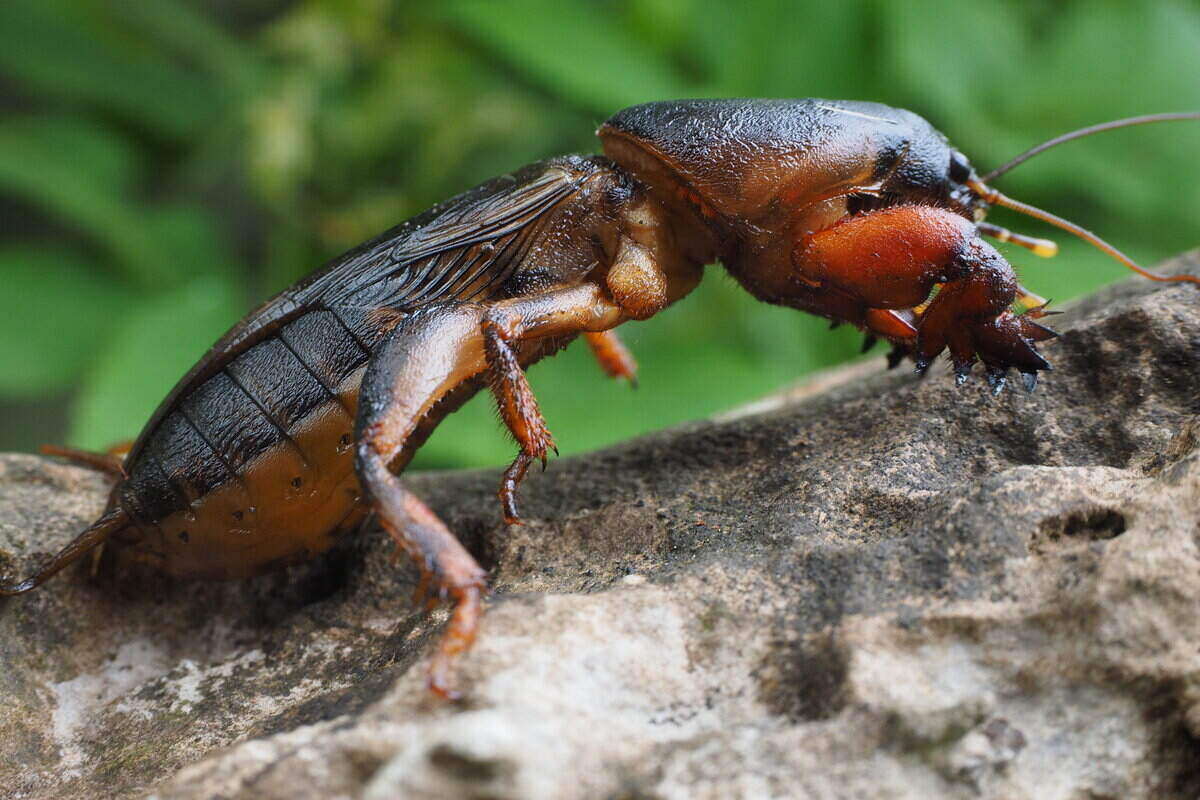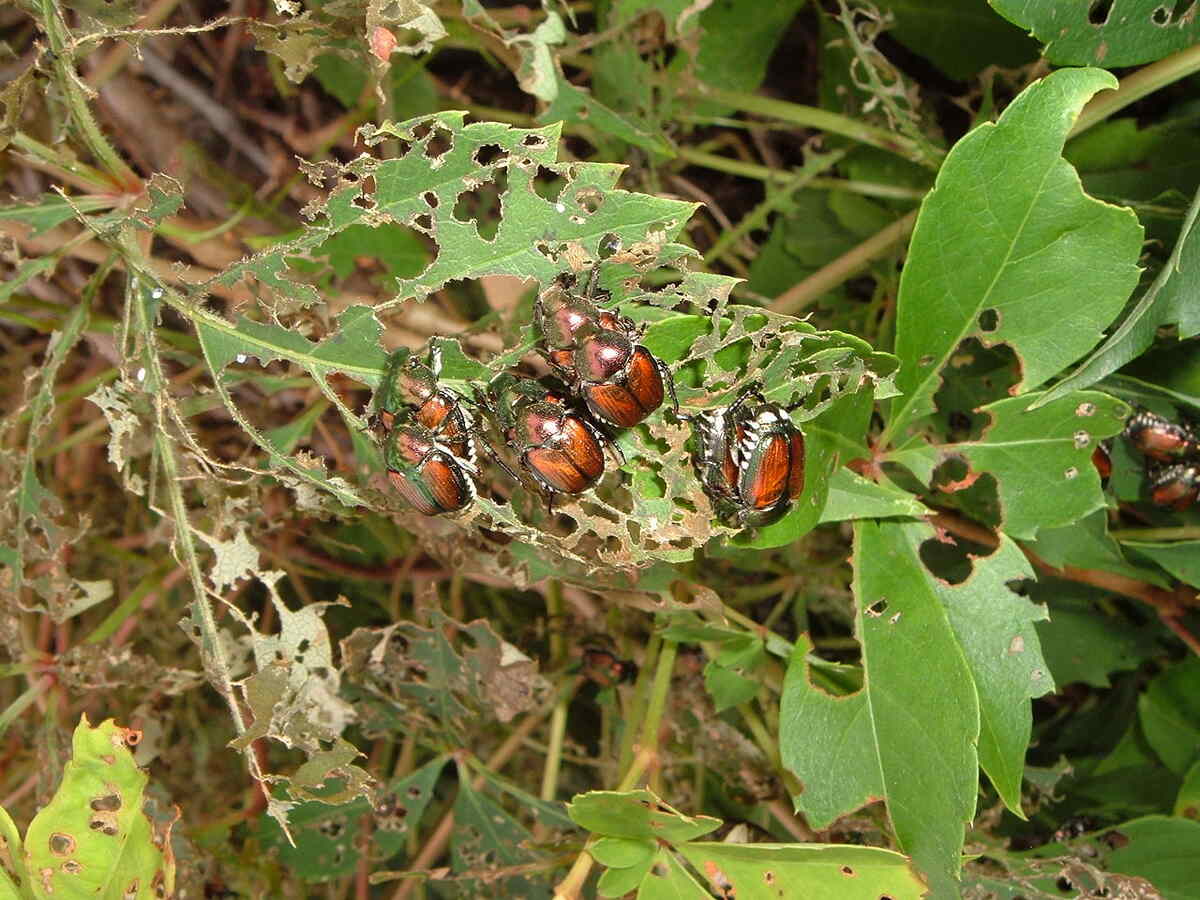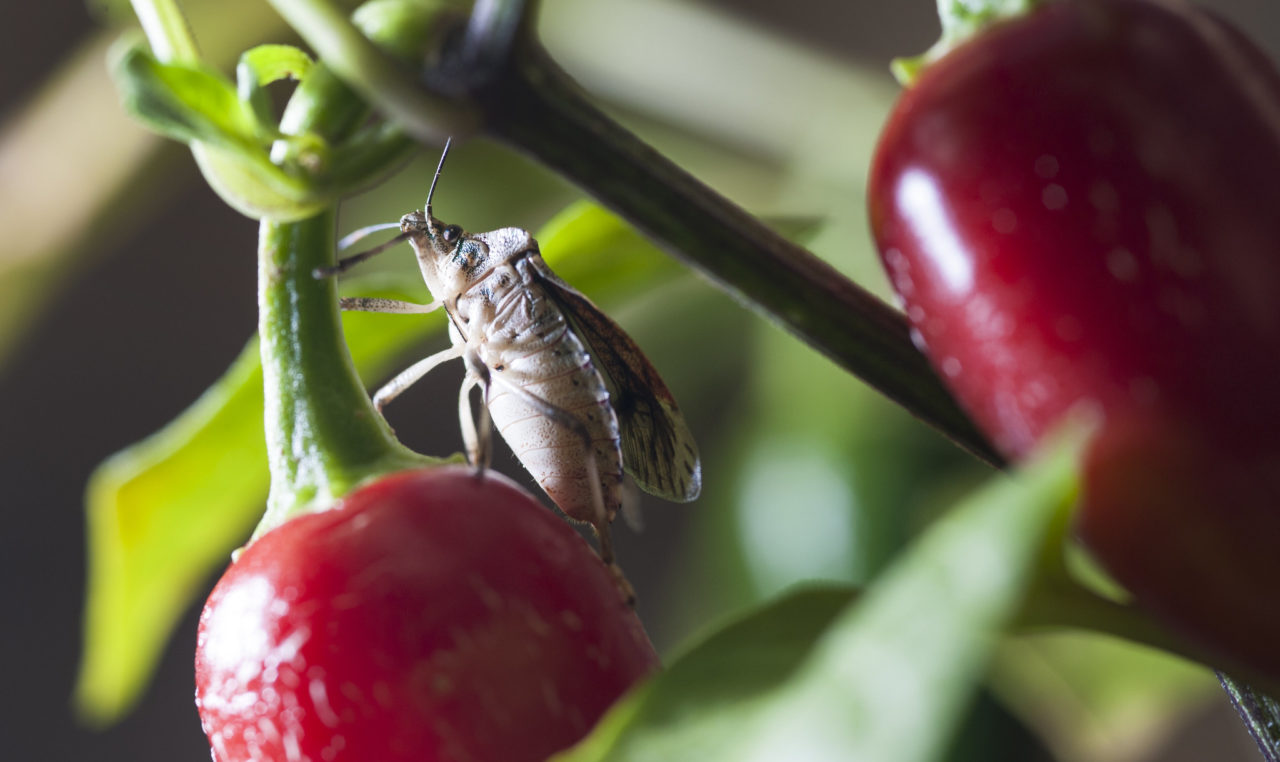
We’ve had stink bugs a long time in the United States but a new species is spreading rapidly since it landed in the U.S. in the ’90s. It’s the brown marmorated stink bug (Halyomorpha halys Stål), often referred to as BMSB.
This type of stink bug came here accidentally from Asia. Its first sighting came in Allentown, Pa., in 1998. They spread rapidly. Today, brown marmorated stink bugs have found homes in 44 states and Washington, D.C. They can literally be found coast to coast – from New Jersey to Oregon.
BMSBs are an invasive species of insects that have quickly spread, particularly in the mid-Atlantic states. While they look harmless enough, they aren’t. In fact, they’ve caused widespread damage to many different crops including apples, sweet corn, peppers, tomatoes, and peaches.
In 2010, just over a decade after their introduction to North America, some growers reported a total loss of crops due to this type of stink bug. Tree fruit damage for Mid-Atlantic apple growers alone was estimated to be $37 million due to BMSBs that year. Addressing the BMSB issue has become a joint effort of the U.S. Department of Agriculture, growers, and entomologists across the country.
Brown Marmorated Stink Bug Life Cycle
BMSBs can mate multiple times and females can lay nearly 500 eggs in their lifetime. Their eggs are light green in color and can often be found on the underside of leaves in clusters of about 25 to 28 eggs. They mate in the spring after overwintering as adults and it takes about 538 degree days for them to reach adulthood.
In between the egg and adult stage, these stink bugs go through a nymph stage. It’s during this phase of their life cycle that they are most visible. The “first instars” — in the period between molts — can be identified by their dark head and pronotum and the orange, red, and black stripes on their abdomen. Later instars’ head and pronotum are primarily black and their abdomen is more rust-colored than orange with black spots down the center and on its edges.
Once this invasive species becomes adult, its speckled brown-gray color blends well with tree bark, making it more difficult to spot. What differentiates adult BMSBs from other kinds of brown stink bugs is that the outer edge of their pronotum is smooth and their antennae have alternating dark and white bands.
Why Does It Stink, and What Does It Smell Like?
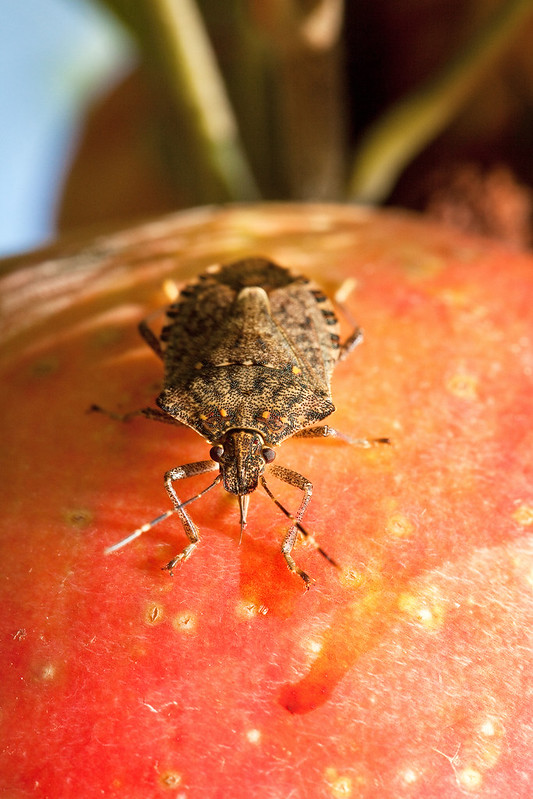
The “stinkiness” of a stink bug is its primary defense mechanism. Like other types of stink bugs, BMSBs emit a strong odor through their abdomen. It protects them from birds, lizards, and other insects considering a stinkbug meal.
Those on the receiving end of a stinkbug’s spray describe the smell as resembling that of coriander. Simply handling one of these bugs or trying to move it can trigger it to release its pungent odor.
Are Stink Bugs Harmful to Humans?
BMSBs and other types of stink bugs are not harmful to humans. They don’t bite or sting nor do they cause structural damage to homes. But they can create a nuisance.
If you encounter one and try to move it, you may get to see for yourself just how badly it stinks. And … not only do will they emit a stinky smell when they are threatened, but they may also release chemicals to attract other stink bugs to your home!
Arthur Agnello, a professor at Cornell University and extension fruit entomologist, serves on the Extension Committee at StopBMSB.org. “The most objectionable thing about them is that they can occur in large numbers inside structures where they overwinter, and they can produce an unpleasant odor when crushed or disturbed,” he says.
“They can produce allergic reactions (rhinitis and/or conjunctivitis) in individuals who are sensitive to the bugs’ odor (the defensive chemicals can be an aeroallergen),” he says. “Individuals sensitive to the odors of cockroaches and lady beetles are may be particularly affected by BMSB. Additionally, if the insects are crushed or smashed against exposed skin, they can produce dermatitis at the point of contact; there has not been much research in this regard, although it appears to affect only a small percentage of the population.”
For more information about this check out the Penn State Fact Sheet on the StopBMSB website.
Why Is There a Stink Bug in My House?
When you find an invasive brown marmorated stink bug in your house, it’s likely because it’s looking for a place to overwinter. If it decides your home is a good place to do so, it will attract other stink bugs using a pheromone to overwinter in your house too. Overwintering is their protective, sleeplike state — like a hibernation. They remain in this state until spring when it’s time to go out, mate, and lay new stink bug eggs.
Like other kinds of bugs, they have a knack for finding an entry point in your home and can easily slip through a door crack or torn screen. They’ll spend the winter hiding in your walls, attic, or wherever they find a good sheltered space. And they congregate, sometimes to the point of a major infestation.
A report from 2012 documented an incident in Maryland, where, over a 181-day period, 26,205 adult brown marmorated stink bugs were collected in one home.
How Do I Kill These Pests?
If you come across one of these stink bugs in your house, you definitely want to get rid of it before it turns into an infestation situation – especially during the cold months. But if you squash it, you risk stinking up your house. So what do you do?
According to Ric Bessin, professor and extension specialist in the Department of Entomology at the University of Kentucky, “One strategy when you run across BMSB would be to use a vacuum cleaner to suck them up. To reduce the number of bags for the vacuum cleaner, knee-high pantyhose can be used in the tube to collect the stink bugs. The stink bugs can be then taken outside, dumped into soapy water, or flushed down the toilet.”
He also shared that “another strategy developed in Virginia, is to use a water pan trap in dark areas such as storage rooms or attics. The water pan trap consists of an aluminum basting pan that has between 1 and 2 inches of soapy water in the bottom. A light is shined into the pan to attract the BMSB. A battery powdered light can help to prevent problems with the light falling into the pan.”
How do keep BMSBs out of my house?
Now that you know what to do if you do catch one in your house, how do you ensure that they don’t get in to begin with?
Professor Agnello says that mechanical exclusion is best. “Cracks around windows, doors, siding, utility pipes, behind chimneys, and underneath the wood fascia and other openings should be sealed with good quality silicone or silicone-latex caulk,” he said. “Damaged screens on doors and windows should be repaired or replaced.”
So, ensuring that these bugs cannot get in is the most effective long-term solution. You could also try applying an insecticide on the exterior of your home; however, this method usually doesn’t keep them out for more than several days to a week. And whatever you do, don’t use indoor insecticidal dust to control stink bugs. It may kill them, but their stinky carcasses will remain in your walls and could even attract other pests like carpet beetles, which can damage your home. And interior insecticide sprays simply don’t work on stink bugs.
Some homeowners have had results using home remedies such as these:
- Squashing a few stink bugs outside of their home as a way to warn other stink bugs not to come.
- Rub dryer sheets on window screens – the smellier the better.
- Hang a wet towel over the deck railing or an outdoor chair overnight. Once it is full of stink bugs, dump it in a bucket of soapy water to eliminate them.
What Kind of Damage Do Stink Bugs Cause to Landscapes?
While brown marmorated stink bugs do not harm humans, they can wreak havoc on the land. They won’t attack your lawn, however, as Professor Bessin warns, “They will damage homegrown produce just like they do commercial crops… Although many of the landscape plants are not damaged, they can use those plants to build numbers. These numbers then move to structures in the fall to find locations to overwinter.”
They may not eat your landscaping, but these stink bugs may lay their eggs on the undersides of host plants in your yard. That could eventually lead to adults finding refuge in your home once the temperatures drop.
Damage to Crops
The biggest problem with BMSBs is the devastation that they cause on crops. When an infestation of brown marmorated stink bugs descends on a crop, they feed off of it and cause all types of damage. They leave scars and sunken areas, and in some cases prevent fruit trees and other plants from producing new seeds.
They eat fruits, pods, leaves, plant stems, and even flower buds.
Some of the crops at the highest risk of damage from this plant pest include apples, Asian pears, green beans, sweet corn, peaches, nectarines, and tomatoes. Cucumbers, cherries, cauliflower, blueberries, hazelnuts, broccoli, and lima beans are also susceptible.
The challenge for many growers and entomologists is how to control the BMSB population without the overuse of harmful pesticides that could have an environmental impact.
Management for This Invasive Pest
Entomologists, researchers at the USDA, and numerous other scientists and members of cooperative extensions have worked on various ways to manage this invasive species. Ideas include integrated pest management (IPM) schemes, behavioral and landscape-based management, and chemical and biological controls.
Unfortunately, these invasive pests have caused disruption to long-standing tree fruit IPMs. However, researchers have come up with a new plan to save crops. This new plan, created by Rutgers University, so far has demonstrated success in reducing insecticide usage while managing tree fruit pests.
Samurai Wasp to the Rescue?
What may be the brightest hope for managing invasive brown marmorated stink bugs is the introduction of the samurai wasp (Trissolcus japonicus).
According to Professor Bessin, the parasitoid wasp that attacks stink bug eggs is “a stingless wasp that specializes on BMSB.”
It’s a natural enemy of the BMSB native to Asian countries including Japan, China, and Taiwan — but not the United States.
However, in 2014, a taxonomist from the Florida Department of Agriculture and Consumer Services identified wasps parasitizing stink bug eggs as samurai wasps. At the time, USDA researchers had imported several strains of these wasps and were testing them in a Newark facility, but these were contained and accounted for.
The samurai wasps found in Maryland did not belong to the quarantined wasps in Newark. They had found their way to the United States on their own.
Though unplanned, the introduction of the wasps gives researchers the opportunity to further explore their effectiveness as a biological control.
So far, studies show that the samurai wasp may be a promising biocontrol agent against the brown marmorated stink bug. And today there have been sightings of the wasp in 10 different states as well as Washington, D.C.
Don’t Let Them Gain a Foothold
Scientists will continue to explore different ways to combat BMSBs through the use of biocontrol, IPMs, and other methods. Bessin mentioned that there’s also a gut microbe that infects BMSB and may aid in its management in the future.
For homeowners, the best approach to combatting a stink bug invasion is prevention. Immediately remove any stink bugs that you find. Seal up cracks or openings to prevent your home from becoming an overwintering site.
